Fantastic Four: First Steps delivers what many consider the perfect Fantastic Four movie experience. But is it truly perfect? While the film excels in bringing Marvel’s First Family to life with remarkable authenticity, it stumbles in connecting to the broader Marvel Cinematic Universe narrative.
This comprehensive analysis breaks down exactly what makes First Steps both a triumph and a missed opportunity, examining five elements that absolutely worked and five areas where the movie falls short.
What Makes Fantastic Four: First Steps Exceptional
The Return of Marvel’s Scientific Foundation
Fantastic Four: First Steps marks a triumphant return to Marvel’s scientific roots, something longtime fans have been desperately missing. Reed Richards exemplifies this shift perfectly – he doesn’t just make claims about scientific phenomena, he actually solves equations and provides concrete explanations for everything he does.
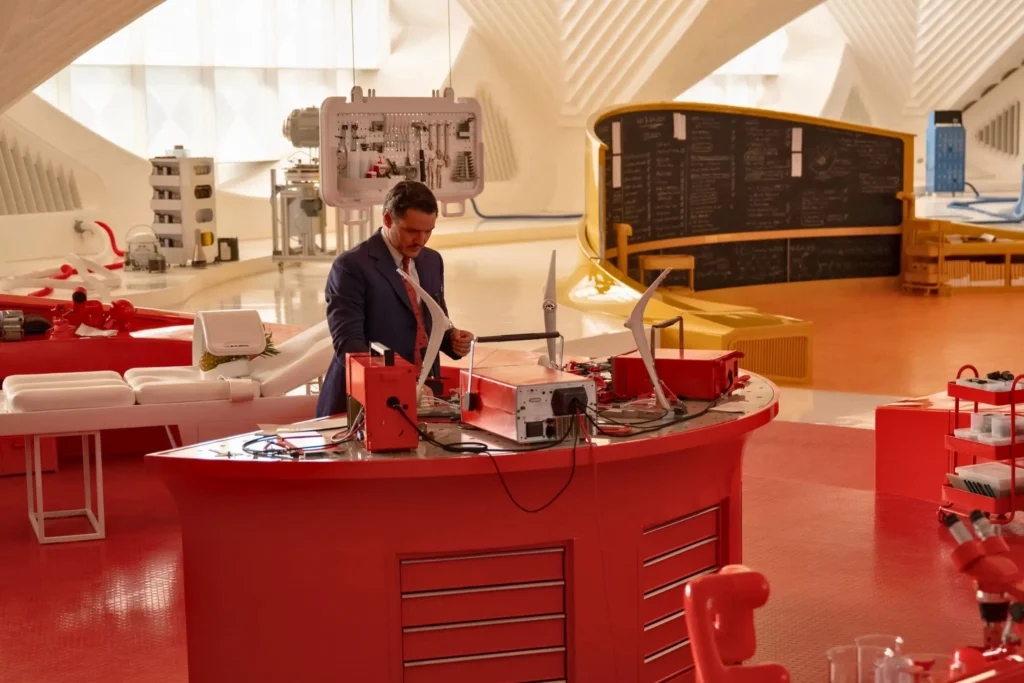
This approach harkens back to Marvel’s Phase One and Phase Two era, when concepts like fusion reactions, gamma radiation, quantum tunneling, and even retrograde reflective panels were given proper scientific treatment. For years, the MCU gradually moved away from these grounded explanations, instead defaulting to “quantum realm” explanations for nearly everything.
Reed’s methodical approach to problem-solving demonstrates that he doesn’t just throw around scientific jargon – every solution he proposes has solid mathematical backing and logical reasoning behind it.
Johnny Storm’s Scientific Brilliance Finally Recognized
One of the most refreshing aspects of First Steps is how it treats Johnny Storm as a legitimate scientist and astronaut, not just comic relief. While Johnny is indeed the youngest team member and brings humor to the group, the film establishes his intellectual credentials early and often.
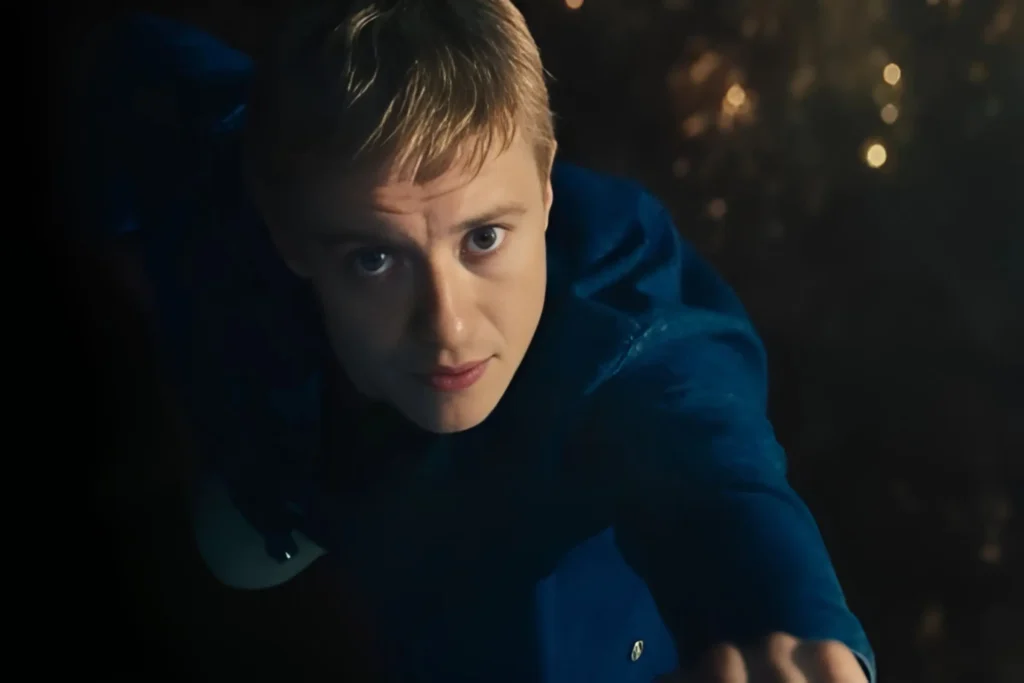
The most impressive demonstration of Johnny’s scientific prowess comes during the deep space signal analysis sequence. Reed explains that these signals are so complexly encoded that he’s spent months unable to decode them. However, after just two encounters with Silver Surfer and hearing only a few translated words, Johnny successfully builds the entire Zenn-La language and vocabulary structure.
This feat requires extraordinary pattern recognition and linguistic analysis skills. Building a complete language framework from minimal data points showcases the kind of brilliant mind that belongs on a team with Reed Richards. The film finally gives Johnny the intellectual respect his character deserves.
Sue Storm as the Team’s Unshakeable Foundation
Sue Storm emerges as the true pillar holding the Fantastic Four together, and the film’s character development does her justice across multiple dimensions. She functions as an excellent friend, devoted sister, loving wife, and caring mother while simultaneously serving as a world-class politician and skilled diplomat.
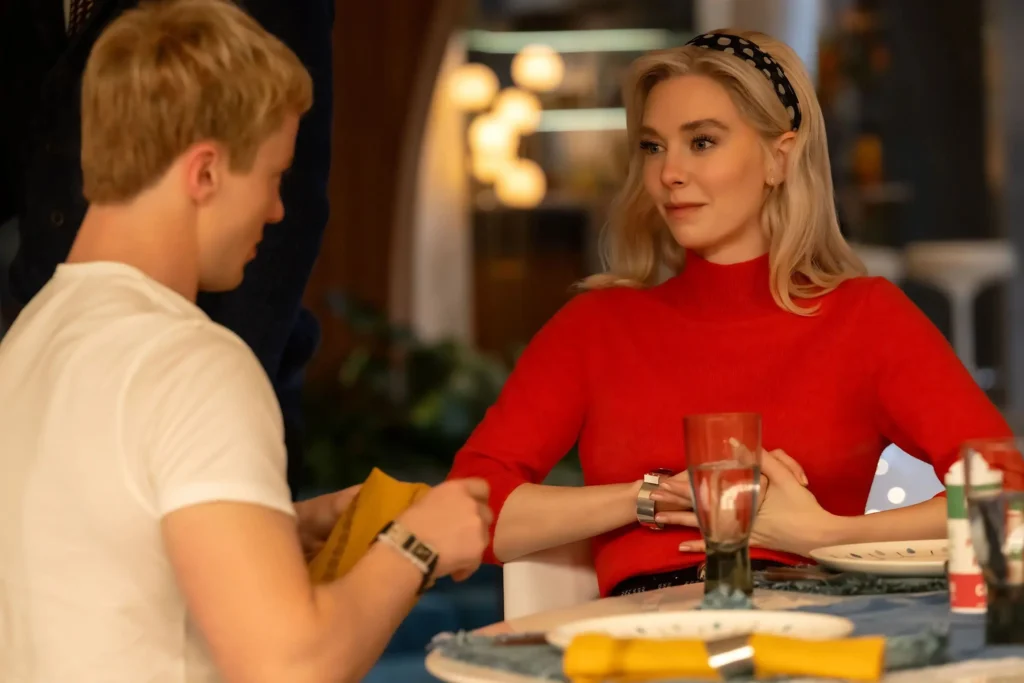
Her diplomatic achievements are particularly impressive. Sue single-handedly negotiated and signed a peace treaty with the people of Subterranea, demonstrating her ability to bridge vastly different cultures and worldviews. Additionally, she successfully convinced the entire world to agree with the Future Foundation’s vision – with the notable exception of Lithveria.
Without Sue’s emotional intelligence and leadership skills, the team would have fallen apart long ago. She serves as the connecting link between Reed, Johnny, and Ben, managing their different personalities and keeping them focused on their shared mission.
Unprecedented Comic Book Accuracy
First Steps stands out as potentially the most comic-accurate MCU film in recent years. Director Matt Shakman didn’t just borrow surface-level elements from the source material – he implemented character arcs, personalities, and core motivations with remarkable fidelity.
Reed’s intelligence and personality perfectly match his comic book counterpart. The cosmic wave events enhanced his already formidable intellect, just like in the comics. The film accurately portrays Reed’s compulsive need to solve every problem himself, which serves as both his greatest strength and most significant weakness.
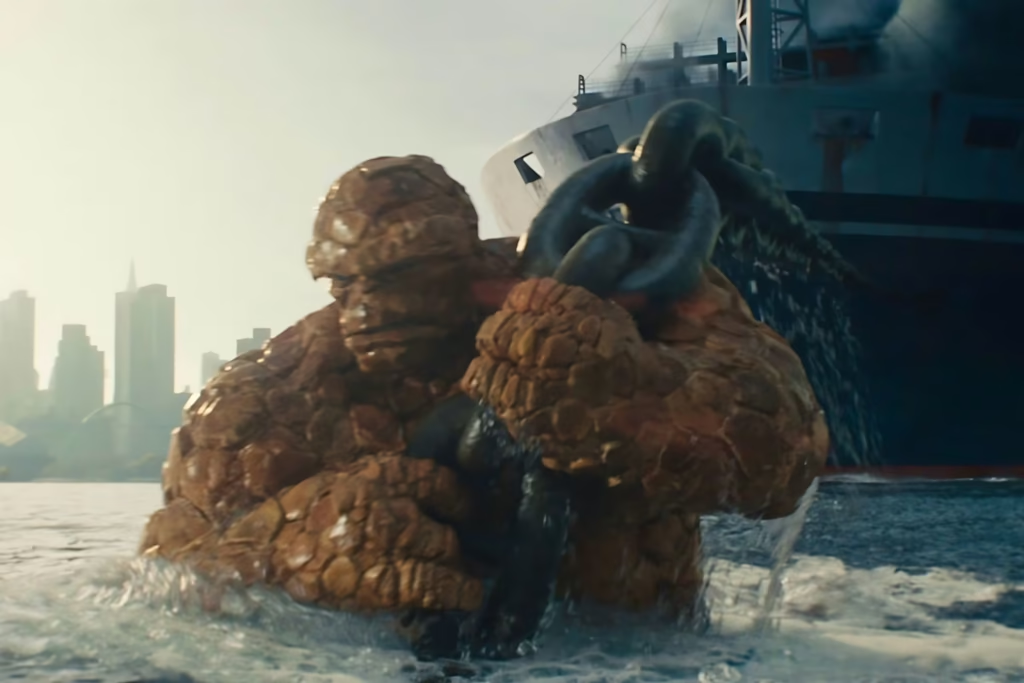
This self-reliant nature creates friction in his relationship with Sue, exactly as it does in the comics. Ben’s characterization also hits the perfect note – while he’s known as “The Thing” and appears rough and tough, the film reveals his softer side through his interactions with Franklin and his desire for a normal life.
Sue’s strong personality receives excellent treatment, and Galactus’s origin gets explained with full comic accuracy in just a few crucial dialogue exchanges.
Galactus’s Overwhelming Presence and Power
The film goes into absolute overdrive when showcasing Galactus’s magnificent presence and cosmic-level threat. Every low-angle shot reinforces the feeling that you’re standing before the genuine Devourer of Worlds, making viewers feel appropriately dwarfed by his immense power.
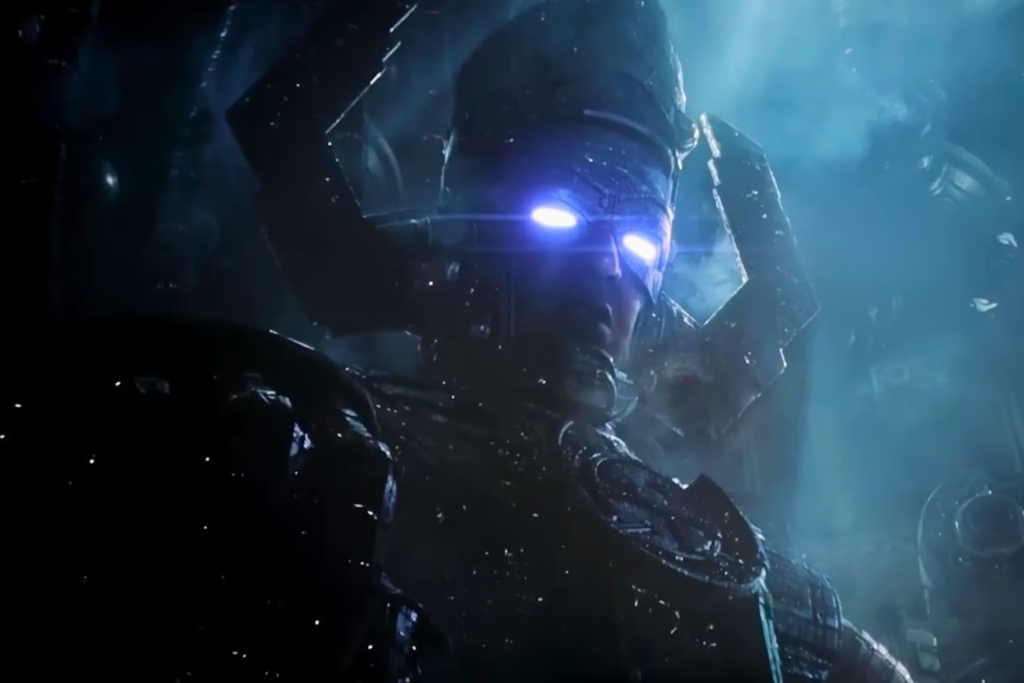
The filmmakers also employ innovative over-the-shoulder shots from Galactus’s perspective, showing how insignificant and meaningless everything appears from his cosmic viewpoint. These visual choices effectively communicate both his physical enormity and his detached, god-like perspective on planetary-scale destruction.
Anyone who watches First Steps will undoubtedly feel Galactus’s grandness throughout the entire movie experience.
Where Fantastic Four: First Steps Falls Short
Oversimplified Execution Hurts Character Development
While First Steps succeeds in creating an accessible entry point for newcomers to the Fantastic Four, this simplified approach severely undermines Galactus’s character development. The decision to keep everything straightforward backfires when it comes to the cosmic-level threats.
Galactus’s origin gets relegated to a single line of dialogue where Reed mentions he’s older than our universe. After that brief explanation, the film never touches on any other aspect of his character, history, or motivations. New audiences learn virtually nothing about what makes Galactus such a significant threat beyond his enormous size.
More problematically, the film’s emphasis on emotional storytelling leads to Sue Storm single-handedly overpowering a being who has consumed six planets. This dramatically reduces Galactus’s perceived threat level for new viewers, permanently damaging the fear and awe that should surround his character.
While the simplified approach benefits the Fantastic Four team’s introduction, it completely undermines one of Marvel’s most formidable cosmic entities.
Major Scientific Inconsistencies Throughout
Despite bringing back Marvel’s scientific foundation, First Steps contains glaring inconsistencies that undermine its credibility with scientifically-minded viewers.
The most obvious contradiction involves Reed’s FTL (Faster Than Light) device positioned in Earth’s orbit. Basic physics tells us that reaching light speed requires infinite energy, yet Reed somehow created technology that exceeds light speed. However, when he needs to power a teleportation portal on Earth, he requires the planet’s entire electrical grid.
The black hole sequence presents even more problematic science. When Silver Surfer pursues them, Reed tells Ben they need to get as close as possible to the black hole’s event horizon. They travel very close to this point and then spend considerable time maneuvering through a wide arc to achieve a slingshot effect.
Near an event horizon, time dilation effects should be so extreme that when they return to Earth, hundreds of years should have passed. Instead, the film indicates only a few months have elapsed. This represents a fundamental misunderstanding of relativistic physics that seriously damages the film’s scientific credibility.
Complete Absence of Incursion References
This represents First Steps’ most significant weakness in terms of MCU connectivity. The film not only fails to show Incursions – it doesn’t even mention the word once throughout its entire runtime.
This omission is particularly problematic because the entire Multiverse Saga has been built around Incursions and multiverse destruction. Doctor Strange in the Multiverse of Madness started Incursions due to Strange’s actions. The Marvels hinted at Incursion phenomena. Yet the last time we heard the word “Incursion” was three years ago, with no subsequent buildup in any MCU property.
First Steps serves as Phase Six’s opening film and should have provided the groundwork for Incursion concepts. At minimum, it should have hinted at these reality-threatening events or begun building toward them. During the Infinity Saga, every movie dealt with Infinity Stone concepts while building interconnected storylines.
The Multiverse Saga has seemingly abandoned its most crucial concept, raising serious concerns about whether Doomsday will feel coherent or just become a confusing mess of disconnected elements.
Unjustified Alternate Universe Setting
The film completely fails to justify why this story takes place in an alternate universe rather than the main MCU timeline. By the movie’s end, this choice makes absolutely no narrative sense.
The alternate universe setting would only make sense if Universe 828 fell victim to Incursions, or if Galactus successfully destroyed it, forcing the Fantastic Four to relocate to Earth-616. However, the team successfully defeats Galactus, protects their Earth, and chooses to remain in their home universe.
This creates a dead-end situation similar to the Wolverine standalone films – characters exist in the MCU but don’t actually participate in the main MCU narrative.
A much more logical approach would have had the Fantastic Four exist in 616 from the beginning, leave Earth to encounter Galactus, get caught near the black hole, and return to find 50-60 years have passed. They would arrive in the present day after the Thanos events concluded, allowing them to integrate naturally into the current MCU timeline.
Zero Connections to the Broader MCU
First Steps feels completely standalone and disconnected from every other MCU property. The film never builds any narrative bridges that would connect it to other movies or storylines.
This disconnect becomes most apparent in the credit scenes, which fail to connect with Thunderbolts’ post-credit sequences despite both being Phase Six properties. Incursions provided a perfect opportunity to create these connections, but the film dumps that responsibility entirely on Franklin Richards.
These choices point to Marvel playing extremely safe with their creative decisions. Even though Robert Downey Jr.’s casting as Doctor Doom has been finalized and Doomsday has been filming for over a year, they still won’t show his face.
This level of creative caution suggests Marvel lacks confidence in their own projects and storylines.
The Future of Fantastic Four in the MCU
Fantastic Four: First Steps succeeds as an excellent Fantastic Four movie, but Marvel’s selling point has always been interconnectedness – something that’s been missing since Kang’s removal from the storyline.

If this movie doesn’t address multiverse destruction or Incursions, that responsibility now falls entirely on Avengers: Doomsday. Since Spider-Man: Brand New Day focuses on Spider-Man’s personal story, why should Spider-Man 4 carry the burden of explaining multiverse concepts that should have been building for years?
Comic book history shows us that Secret Wars required six years of groundwork preparation in 2015. Stories of this magnitude deserve nothing less than comprehensive buildup.
The question remains whether the Fantastic Four will only interact with main MCU characters during Doomsday and Secret Wars, or if future films will show them truly integrating into the Marvel Cinematic Universe. Only time will tell if this alternate universe approach pays off or becomes another missed opportunity.

